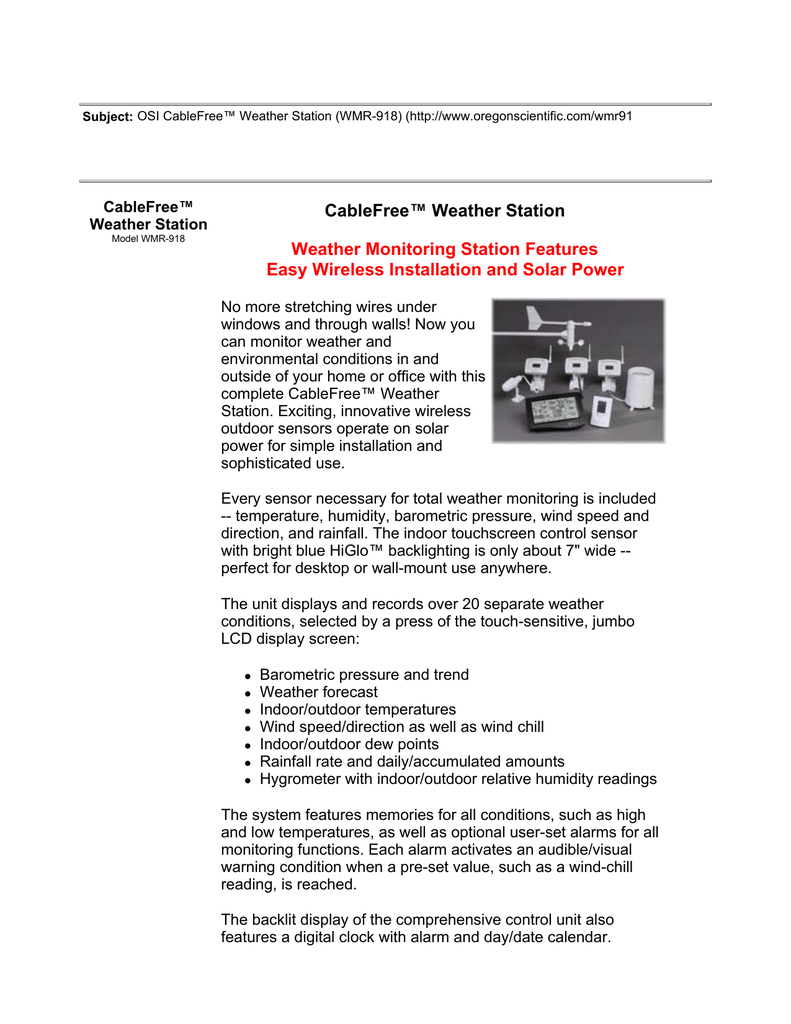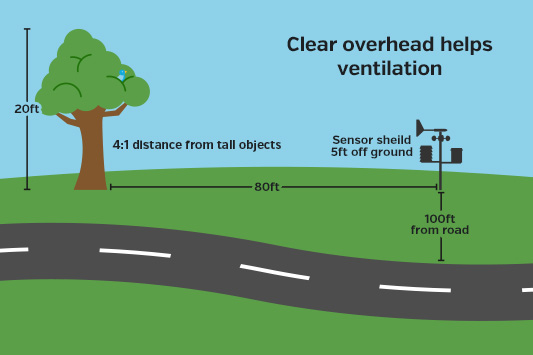


If not (as presented in the picture), add a 10K resistor between the first and the second pin. The board with the DHT11/DHT22 has only three pins. If your sensor is on a small board, there is already a resistor between pin 1 and 2. As you can see in the image above I add all the sensors in the broadboard next to the NodeMcu.Ĭonnecting the DHT11 or DHT22 sensor is very easy. I started with the blue DHT11 but get enthusiastic and bought the white DHT22 soon after. This is a simple sensor to start with! The DHT22 is slightly more accurate compared to the DHT11 but is less costly. Once a sensor is working properly you can go on and add the next sensor. I can recomment you to connect the sensors one after the other, starting with the DHT11/DHT22 sensor.
Easy weather station set user manual code#
In the code below and the corresponding Fritzing visualisation, the connections are already adjusted. (google: 'NodeMCU pin map')įor example: If you want to connect some sensor to D5, you have to mention pin 14 in your arduino code. If you mention an GPIO pin in the sketch for the NodeMCU, you have to connect the wire to the pin indicated in the picture below.
Easy weather station set user manual software#
Add the following link in the field 'additional board URL':Īfter this you can restart the software and you must be able to select the board in the board manager (V1.0 or V0.9).Ī small note: when you are programming an NodeMCU board, the pin layout is slightly different from an arduino board. Simply open arduino IDE, the latest version (I use 1.6.6). Programming the nodeMCU with arduino is easy! As I never used this software before I preffered to stay with the arduino IDE software. I found a lot of tutorials on the internet where they programmed the board with LUA software. Yyou can not use the 0.9 version on a broadboard and plug in wires next to it. The only difference I know is that the 0.9 version is wider than the 1.0 version. If you want to buy a NodeMcu board you can buy either the 0.9 version or the 1.0 version. You can safely connect the board by USB to your computer without having to buy a 3.3 volt stepdown module. Also, the board consists of a 5 volt step down converter. The big advantage of the NodeMcu board is that the board can be programmed in the arduino environment: arduino IDE. The later version (one of them is placed on top of the NodeMcu board) do have more digital pins. The shield can be bought and used as an individual controler, a well known version is the esp8266 V1 which has only got 2 digital pins. You can reconise this shield by the metal plate on top of it. The NodeMcu board is in fact an arduino with a wifi shield. At that time I had no idea of the big advantages of the board. The NodeMcu board did look a lot like an arduino and therefore it felt very familar. I was looking for a board that could connect my projects to the internet.

(NodeMCU=4,76$, DHT22=3,10$ OR DHT11=1$, BMP180 = 3,50$, Rain sensor = 0.99$, additional materials such as perfboard, wires, 2 diodes, 2 resistors and 1 LDR, I estimate around 4$)Īs I am a newby, I bought the NodeMcu board for less than 6$, more or less per exident. I estimate the costs of the project around 15$.

The specific materials needed for this project are mentioned per step. This channel will stream the following sensor data to a Thingspeak channel:


 0 kommentar(er)
0 kommentar(er)
